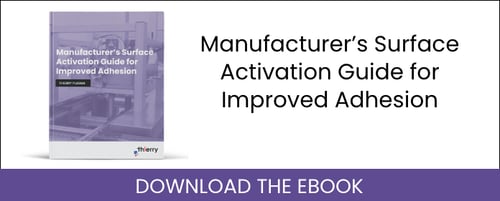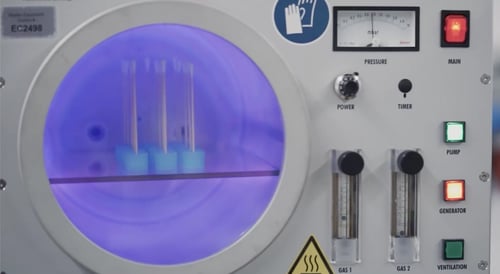Adhesion science and
plasma technology go hand in hand. The goal of most plasma treatments is to alter surface characteristics to either raise or lower a surface’s ability to adhere. These plasma treatments are often called
adhesion treatments. Adhesion science can be boiled down to a term called surface energy. Surface energy is measured in units called dyne levels. Essentially, the higher the material’s surface energy, the stronger that surface’s adherence capabilities are. A surface will undergo an
adhesion treatment to allow paints and glues to adhere to it more effectively. This is especially useful when trying to paint certain plastics that normally have a very low surface energy.
Adhesion Treatments
Adhesion treatment can not only increase material’s surface energy but has the ability to lower surface energy to the point that it can repel water. This is achieved through a process called
plasma coating. A hydrophobic layer is deposited onto a surface making it have a very low surface energy. When this adhesion treatment is applied to a surface, water will bead up into drops on the surface and not spread out like it would on most surfaces.
In
adhesion science, the term used to describe whether or not water wets a surface or beads up is called a surface’s
wettability. Often in
adhesion science, to measure a surface’s wettability, a contact angle test is used. This is where the angle that is created between the surface and the drop of water on the surface is measured; the lower the angle, the higher the surface energy and the better the adherence capability of that surface.

